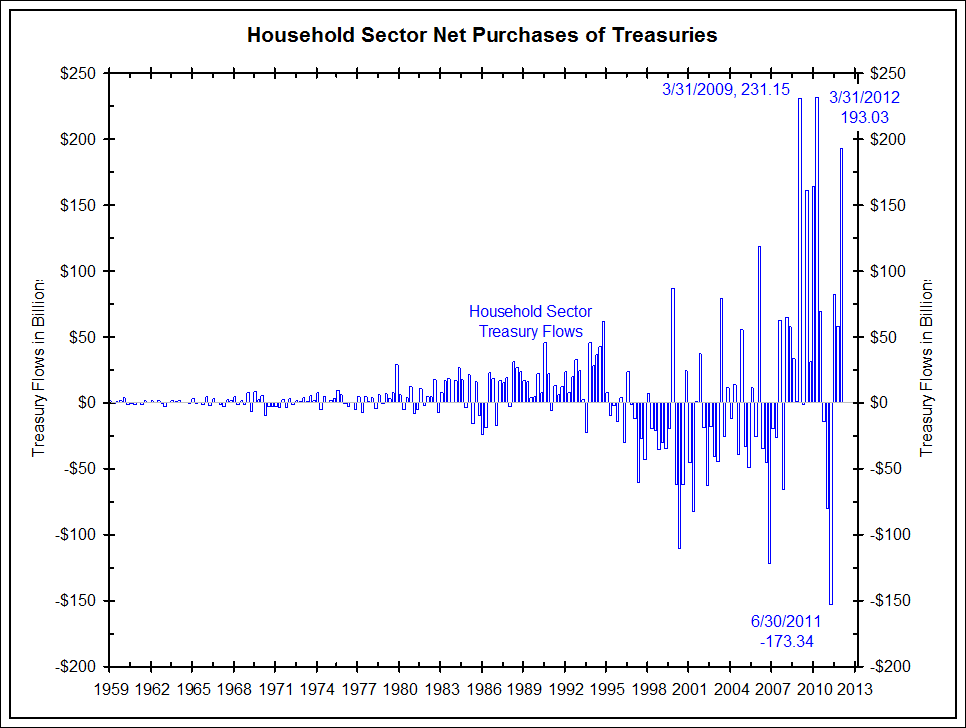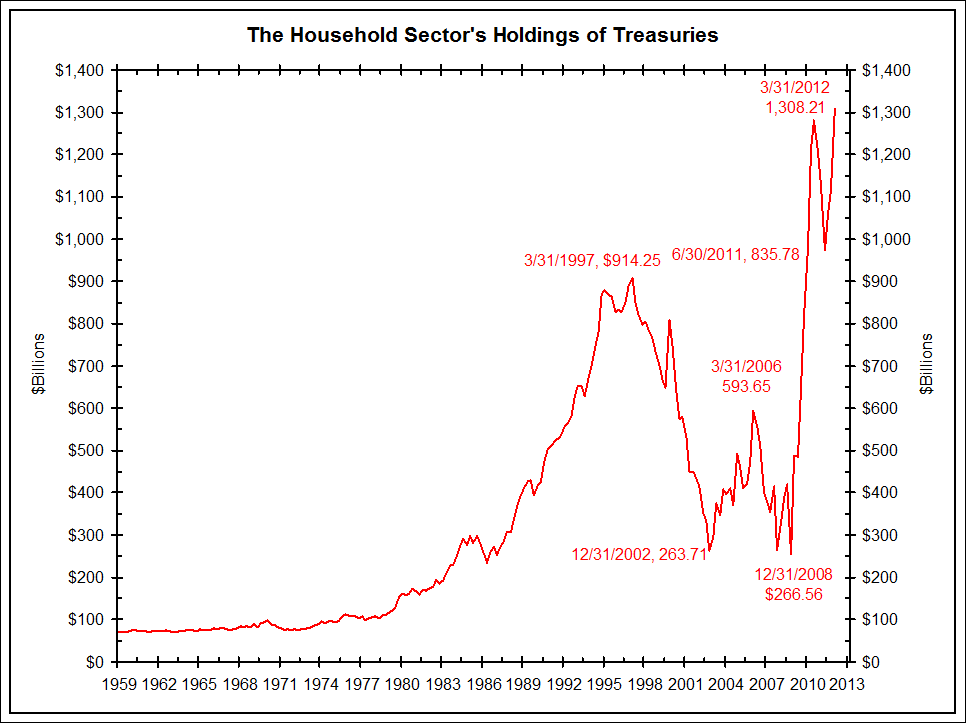CNBC – Guess Who’s Buying All the Bonds? (It’s Not the Fed)
Mom-and-pop investors, and not the Federal Reserve, have been the ones most responsible for driving the mad dash to government debt, according to newly released data. The Fed’s ambitious Treasury-buying program has pushed the central bank’s balance sheet to $2.83 trillion and, by many accounts, the benchmark 10-year Treasury yield to record lows, most recently to 1.56 percent. But despite the low yields, it’s been retail investors most responsible for the recent move plunge. “The conventional view is that 10-year Treasury yields have been pushed down to 1.5 percent and 10-year (Treasury Inflation Protected Securities) yields to -0.5% by the actions of the Federal Reserve and the safe haven demand from foreign investors,” Capital Economics said in a research note. “The reality, however, is slightly different.” The demand among average investors has swelled so much, in fact, that they bought more Treasurys in the first quarter than foreigners and the Fed combined. Households picked up about $170 billion in the low-yielding government debt during the quarter, while foreigners increased their holdings by $110 billion. The Fed, meanwhile, actually slightly decreased its net holdings, not a surprise since its latest quantitative easing endeavor begun in September — nicknamed Operation Twist — was designed to be balance sheet-neutral. The central bank is selling short-dated notes and buying an equal number of longer-duration issues in an effort to drive down borrowing rates and boost risk. For Capital, the more meaningful aspect of Treasury demand from households is that should the Fed opt not to do more easing when Twist concludes at the end of June, there still will be demand for government debt that could keep yields from surging as some expect. Retail investors have continued to draw down their money market funds but direct the cash instead to bonds, while equity mutual funds continue to lose flows. The move is seen in large part because of fears over the European debt crisis and U.S. economic slowdown.
Comment
With U.S. Treasury issuance skyrocketing over the past couple years, yields at new all-time lows and talk of a bond bubble rife, we are often asked, “Who is buying all this Treasury debt?” While the story above correctly points to households as a major purchaser in recent quarters, it incorrectly describes this group as “mom and pop.” Below is an updated description of households as categorized in the Federal Reserve’s flow of funds report
Domestic Investors – Households
As the charts below show, households’ holdings of Treasuries have grown more than threefold since December 2008 despite net sales of $173 billion in Q2 2011. While it may seem to make sense to attribute these flows to “mom and pop” given the category’s name, this would be inaccurate. As we explained last year:
We must first lay out the definition of households from the flow of funds report (page 12):
For most categories of financial assets and liabilities, the values for the household sector are calculated as residuals. That is, amounts held or owed by the other sectors are subtracted from known totals, and the remainders are assumed to be the amounts held or owed by the household sector. For example, the amounts of Treasury securities held by all other sectors, obtained from asset data reported by the companies or institutions themselves, are subtracted from total Treasury securities outstanding, obtained from the Monthly Treasury Statement of Receipts and Outlays of the United States Government, and the balance is assigned to the household sector.
To be clear, the “household sector” is misnamed. It is the residual account with a fancy name. So given this, what does it mean when the residual account soars? We would suggest that it means there is a measurement problem. In this case, the Federal Reserve cannot “find” the buyers of Treasuries thanks to the exploding deficit. They correctly assume that the buyer exists (otherwise the market would not exist) and therefore place the “missing” buying in the residual account. Since this account is called the “household sector”, we all assume that “mom and pop” bought this sum.
If “mom and pop” were really the end buyers we would expect to see similarly booming numbers from the mutual fund industry. However, as we will detail in part 2 of this post tomorrow, mutual fund purchases are a somewhat insignificant portion of domestic buying.
Our guess is the domestic buyer is a leveraged carry trader, a mutual fund, a brokerage subsidiary or other group that does not have its own category so it gets “dumped” into the default category of “households.”
Click to enlarge:
Conclusion
While the default category of “households” chipped in with almost $200 billion of Treasury purchases during Q1 2012, do not assume this means “mom and pop” are soaking up the Treasury’s increased issuance. According to the flow of funds categorization, households are simply a residual category for all the net purchases which do not fit into one of the Federal Reserve’s other pre-defined categories. Tomorrow we will detail the net purchases of many of these other categories, from foreigners to mutual funds and the Federal Reserve.
Source: Bianco Research




What's been said:
Discussions found on the web: